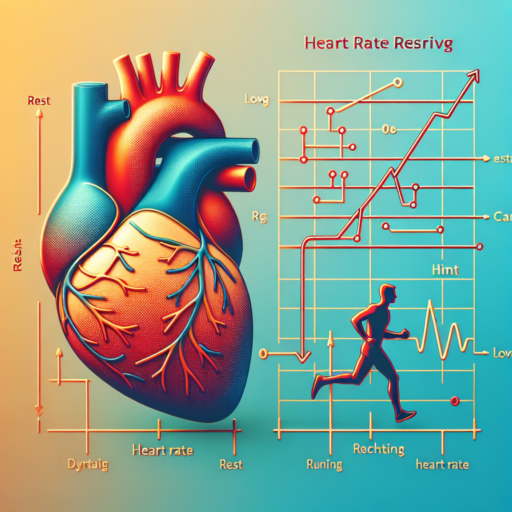What is the heart rate reserve?
The Heart Rate Reserve (HRR) is a valuable measure for athletes and fitness enthusiasts aiming to optimize their workouts. It represents the difference between a person’s maximum heart rate and their resting heart rate. Understanding your HRR is crucial because it helps tailor cardiovascular exercises to improve both endurance and overall heart health efficiently. This concept is not only pivotal for creating personalized training programs but also plays a significant role in monitoring cardiovascular fitness levels.
Calculating your HRR is straightforward and involves two primary metrics: your maximum heart rate and your resting heart rate. The maximum heart rate can be estimated with the formula 220 minus your age, although this is a general approximation and may vary based on individual fitness levels and genetic factors. The resting heart rate should be measured after waking up in the morning, while still in bed and in a calm state. The difference between these two values gives you your Heart Rate Reserve, offering a personalized window into your cardiovascular capabilities and allowing for more targeted training intensities.
Integrating HRR into workout planning enables individuals to apply the Karvonen Formula, which factors in the HRR to calculate training intensities. This approach ensures that exercises are not only effective but also safe, reducing the risk of overtraining and potential cardiovascular strain. By basing workout intensities on one’s HRR, the training becomes highly individualized, catering specifically to the body’s current fitness level and cardiovascular endurance capacity.
What should your heart rate reserve target be?
Determining your ideal heart rate reserve (HRR) target is a critical step for effective cardiovascular training and overall fitness. Your heart rate reserve is the difference between your maximum heart rate (MHR) and your resting heart rate (RHR). This figure plays a crucial role in personalizing exercise intensity and optimizing workout results. Generally, your exercise sessions should aim at 50% to 85% of your HRR, depending on your fitness level and training goals.
For beginners or those new to exercise, starting at the lower end of the HRR spectrum is advisable. An exercise intensity based around 50% to 60% of your heart rate reserve is considered moderate and is a safe starting point for building endurance and cardiovascular health. As your fitness improves, gradually increasing the intensity to target 70% to 85% of your HRR will further enhance aerobic capacity and strength.
To accurately calculate your heart rate reserve and identify your target zones, you will first need to determine your maximum heart rate (usually estimated as 220 minus your age) and your resting heart rate (best measured first thing in the morning). With these numbers, you can apply the formula HRR = MHR – RHR, and then calculate your target heart rate for exercise by applying the desired percentage range. Remember, as your fitness level changes, so too should your HRR target, making regular assessment an essential part of your training routine.
What is a good HRR rate?
Understanding the nuances of a good Heart Rate Recovery (HRR) rate is essential for athletes, fitness enthusiasts, and anyone interested in monitoring their cardiovascular health. The HRR rate is a pivotal marker, indicating how quickly your heart rate returns to normal after exercise. But what exactly constitutes a «good» HRR rate? Experts agree that a rapid decline in heart rate post-exercise is an indicator of a healthier, more efficient heart. Typically, a drop of 15 to 20 beats per minute is considered healthy, but this can vary based on individual fitness levels and age.
Factors Influencing HRR
Several factors can influence your HRR rate, making it important to understand the context behind the numbers. Age, fitness level, and the intensity of the exercise all play crucial roles. As we age, our HRR rate tends to slow down, thus understanding what is «good» for you might change over time. For fitness enthusiasts and athletes, a quicker HRR signifies a higher level of cardiovascular fitness, allowing them to recover faster and perform better in subsequent physical activities.
Measuring Your HRR
Measuring your HRR is straightforward and can offer significant insights into your heart health. Begin by finding your peak heart rate immediately after stopping exercise. Then, after a one-minute rest, measure your heart rate again. The difference between these two numbers will give you your HRR. Using this method regularly, especially after similar workouts, can help you monitor your cardiovascular health progression over time.
No se han encontrado productos.
Is HRR or Max HR better?
Deciding between Heart Rate Reserve (HRR) and Maximum Heart Rate (Max HR) involves understanding their distinct purposes in fitness and health monitoring. Both metrics offer insights into cardiovascular health and performance, but their applications might differ based on individual goals.
Heart Rate Reserve (HRR) is calculated by subtracting your resting heart rate from your maximum heart rate. This figure represents the range within which your heart rate can safely increase during exercise. It is often used to tailor workout intensity to your current fitness level, making it a valuable tool for personalized training programs.
On the other hand, Maximum Heart Rate (Max HR) is the highest number of beats per minute your heart can achieve through intense exercise. It’s a benchmark for understanding your heart’s maximum capacity. Knowing your Max HR is crucial for setting upper limits in high-intensity workouts to avoid overexertion and potential health risks.




